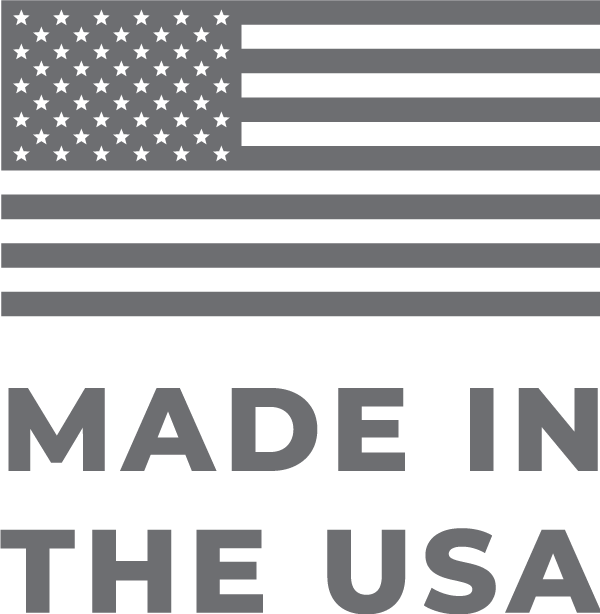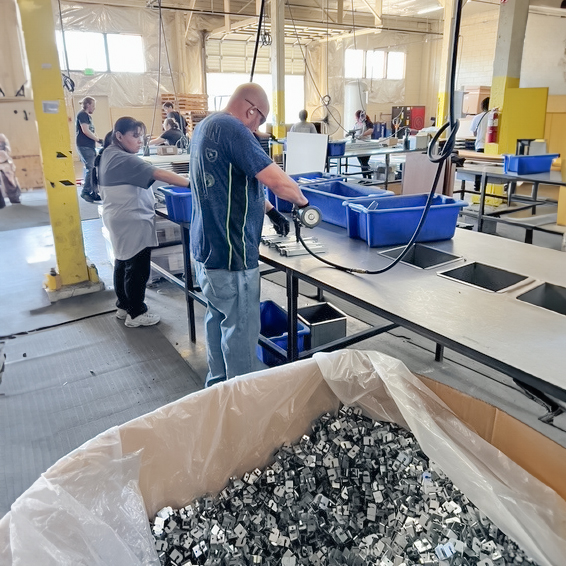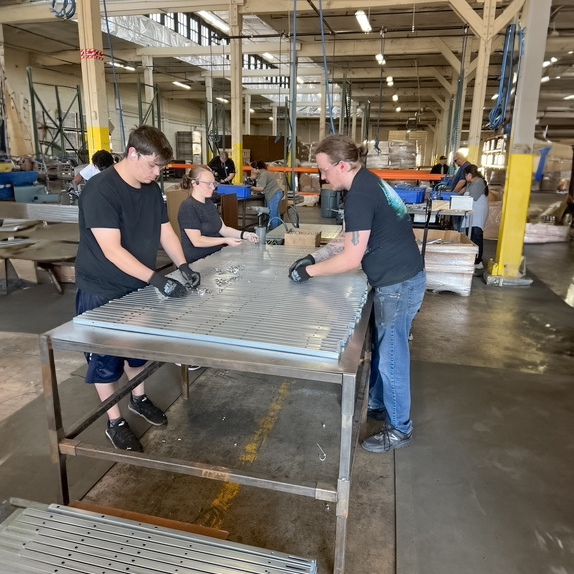
Domestic Content Center
The American Domestic Manufacturing Bonus tax credit is an important tool for investing in American workers and American businesses. Projects that meet the domestic content requirement receive up to a 10-percentage point bonus on top of the 30% PTC or ITC. 1
This page will be updated as new information becomes available—check back regularly!


Proudly made in the USA
PanelClaw has a long history of supporting American businesses. Since our founding, the vast majority of our racking system components have been produced in the United States using U.S.-sourced raw materials. When domestic manufacturing tax credits became available in 2022, PanelClaw was already prepared – our established supply chain allowed customers to benefit immediately. By contrast, many other solar equipment providers had to restructure their operations.
Every component of PanelClaw’s clawFR and clawFRplus mounting systems is fabricated in the U.S. We have over 17 years of experience manufacturing rooftop products with an annual capacity of more than 2 GW.
Domestic Content Guidance
The Department of the Treasury and the Internal Revenue Service have issued guidance for determining domestic content bonus credit amounts on several occasions starting in May 2023 with Notice 2023-38 “Domestic Content Bonus Credit Guidance under Sections 45, 45Y, 48, and 48E”. Next came Notice 2024-41 (May 2024) that allowed developers to use Department of Energy cost percentages instead of supplier data to qualify for the bonus.
In January 2025, Notice 2025-08 was issued, building on the Safe Harbor Table in the May 2024 guidance with an Updated Elective Safe Harbor Table that adjusts cost-percentage allocations across modules, inverters and racking, affecting how developers plan projects. This latest domestic content guidance remains valid unless superseded, with a 90-day transition period after any future updates. The May 2024 Safe Harbor Table is usable only for projects that commenced before April 16, 2025, meaning the project was physically started per Physical Work Test rules or at least 5% of the project costs were spent by the deadline. 2 Developers can also opt for the Direct Cost Method from Notice 2023-38.
Impact of H.R. 1 on Domestic Content Requirements and Safe Harboring
- Prior to the passage of H.R. 1, the One Big Beautiful Bill Act (OBBB) on July 4, 2025, the domestic content threshold to qualify for the bonus credit was 40%. The OBBB bumps the threshold to 45% for projects commencing construction after June 16, 2025, and increases it by another 5% on January 1, 2026 and January 1, 2027 (final threshold settles at 55%).
- A 40% DC threshold is achievable with just MLPE and rooftop racking. At 45%, a modest contribution is necessary from the PV module, starting at 0.6% in 2025 and increasing by 5% in 2026 and 2027.
- July 4, 2026 marks the end of the one-year “beginning of construction” safe harbor under H.R. 1. After that date, developers lose the four-year timeline and instead must meet a much tighter placed-in-service deadline (by December 31, 2027). Projects that fail to meet these criteria are not eligible for the ITC/PTC (or the domestic content bonus credit that is added on top).
- H.R. 1 also introduces Foreign Entity of Concern (FEOC) provisions which apply to projects that start construction after December 31, 2025. PanelClaw has an unmatched ability to address FEOC requirements.
- Manufacturers and developers must analyze these changes, considering component availability, costs, and future domestic manufacturing trends.
What’s Next?
PanelClaw is committed to providing the support and documentation required to monetize all available energy tax credits for projects using our racking. Please contact your sales representative for more information.
PanelClaw does not provide tax, legal or accounting advice. This material has been prepared for informational purposes only, and is not intended to provide, and should not be relied on for, tax, legal or accounting advice. You should consult your own tax, legal and accounting advisors before engaging in any transaction.
- the project has a maximum net output of less than 1 megawatt -or-
- the project satisfies the prevailing wage and apprenticeship requirements
2 After Sept 1, 2025, only the Physical Work Test is permitted to Start Construction except for solar facilities ≤ 1.5 MW AC.
